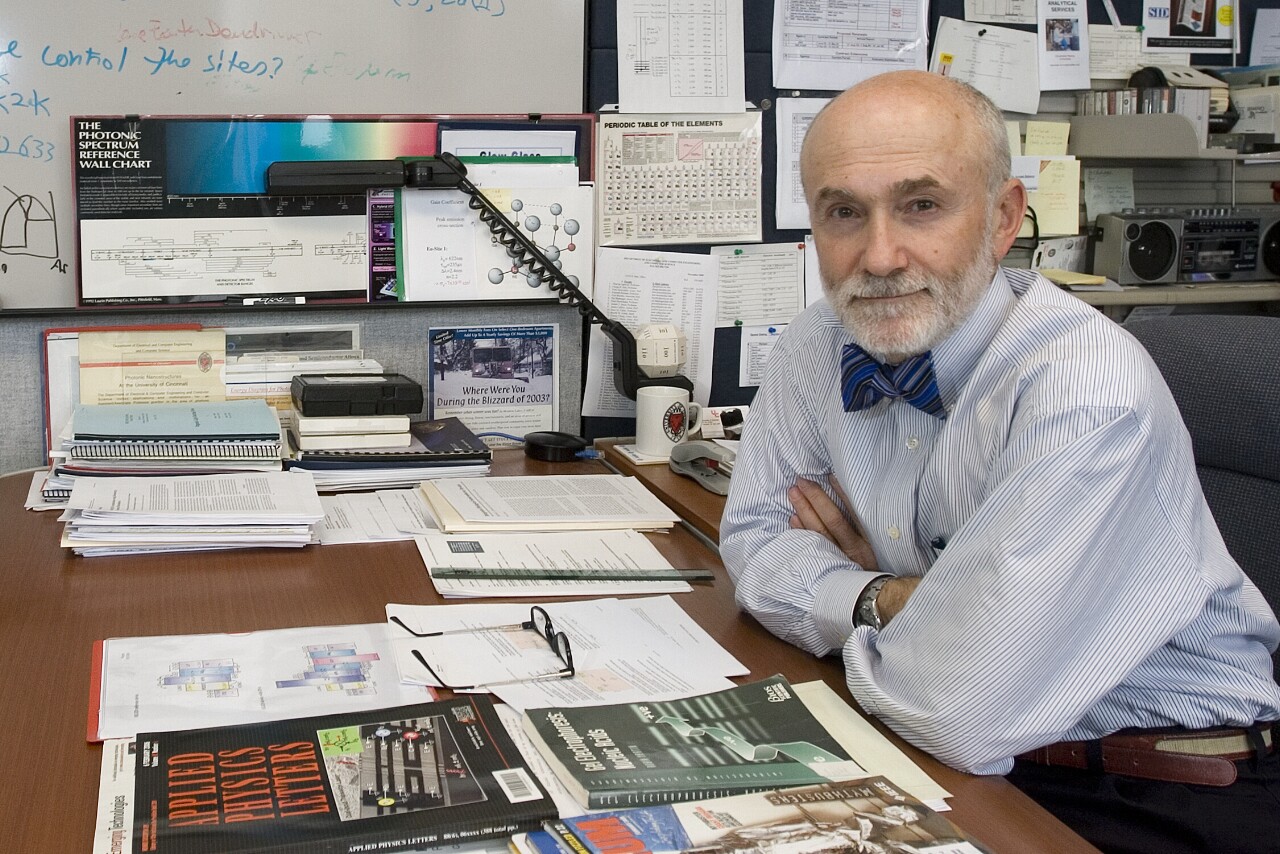E-ink's benefits over other forms of display are obvious: you don't have to backlight it if you don't want to, so it's very easy on the eye and also on a device's battery. You can effectively use it to produce an electronic screen that's as pleasant to look at as a printed piece of paper. And the technology seems set to take another leap forward with the announcement that University of Cincinnati researchers have developed an e-ink technology that's quick enough to competently display full color video – but so cheap that it can be completely disposable. How? Well, instead of using glass or flexible plastic as the basic substrate layer, they're using paper – and getting excellent results. So you could end up with single-page disposable electronic newspapers and magazines that use a tiny fraction of the paper their printed counterparts require. Clever stuff!
The paper-based e-ink technology uses the electrowetting method, in which an electric field is applied to colored droplets in a display unit to effectively turn on and off pixels in an array. Unlike an electrophoretic display like the one used in Amazon's Kindle e-reader, an electrowetting screen is able to deliver full color, and it can refresh quickly enough to display video.

It uses very little power, it's low-voltage, but delivers high contrast and can be used to deliver exceptional brightness, up to four times brighter than a reflective LCD screen - not to mention that electrowetting screens can be made flat and very thin.
Previously, the technique has required complex circuitry printed onto rigid glass or flexible plastic, but Electrical Engineering professor Andrew Steckl and doctoral student Duk Young Kim from the University of Cincinnati have discovered that you can get glass-like performance using a simple piece of paper as the substrate.

The end result will be a flexible, very cheap paper screen that can be sold as a disposable item like a newspaper or magazine. You could even print books on it, given a longer-lasting power source. It would be more convenient than a newspaper to read in just about any situation (but particularly on the train), and since it's cheap and disposable there'd be none of that paranoid feeling you get using an expensive iPad or Kindle in public.
“Nothing looks better than paper for reading,” said Steckl, an Ohio Eminent Scholar. “We hope to have something that would actually look like paper but behave like a computer monitor in terms of its ability to store information. We would have something that is very cheap, very fast, full-color and at the end of the day or the end of the week, you could pitch it into the trash.”

Whether or not the commercial applications of this technology end up being as cheap and effective as its inventors hope, paper-based electrowetting looks like a worthwhile and exciting addition to the portable display market. We look forward to seeing it in action.
Full press release at the University of Cincinnati website.







